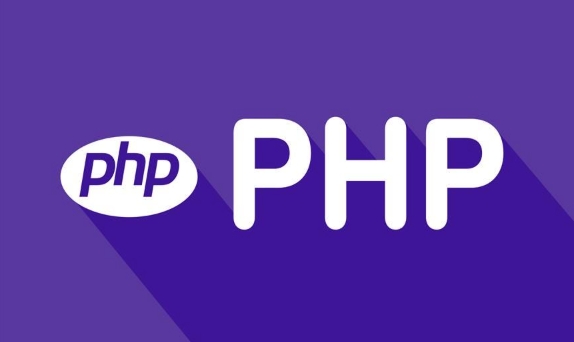 Backend Development
Backend Development
 PHP Tutorial
PHP Tutorial
 How do you prevent Cross-Site Request Forgery (CSRF) in php applications?
How do you prevent Cross-Site Request Forgery (CSRF) in php applications?
How do you prevent Cross-Site Request Forgery (CSRF) in php applications?
Jul 13, 2025 am 01:56 AMTo prevent CSRF attacks in PHP applications, you need to use anti-CSRF tokens, verify HTTP methods, set SameSite cookie attributes, and consider using a framework that automatically handles CSRF. 1. Use anti-CSRF token: the server generates a unique token and associates it with the user session, adds a hidden field to the form to submit the token, and verify whether the token matches when submitting; 2. Verify HTTP method: Ensure that sensitive operations are only performed through secure methods such as POST, and rejects unanticipated GET requests; 3. Set SameSite Cookie attribute: Configure SameSite=Strict or Lax through session_set_cookie_params to prevent cross-site requests from carrying cookies; 4. Use frameworks: such as Laravel, Symfony and other built-in CSRF protection mechanisms, automatically handle token generation and verification, improve security and reduce manual omissions.

Preventing Cross-Site Request Forgery (CSRF) in PHP applications is essential for securing user data and ensuring that actions taken in your app are intentional. The core idea is to verify that requests coming into your system were intentionally made by the authenticated user — not by a third party trying to exploit them.

Here's how you can effectively protect your PHP application from CSRF attacks.
Use Anti-CSRF Tokens
The most reliable method to prevent CSRF is by using anti-CSRF tokens (also known as synchronizer tokens). These are unique, unpredictable values generated by the server and associated with a user's session.

- When generating a form, include a hidden input field containing this token.
- On form submission, check if the submitted token matches the one stored in the session.
- If they don't match, reject the request.
For example:
// Generate token (if not already set)
if (empty($_SESSION['csrf_token'])) {
$_SESSION['csrf_token'] = bin2hex(random_bytes(50));
}
// In your form:
echo '<input type="hidden" name="csrf_token" value="' . $_SESSION['csrf_token'] . '">';
// On submission:
if (!hash_equals($_SESSION['csrf_token'], $_POST['csrf_token'])) {
die('Invalid CSRF token');
}This ensures that only forms generated by your application can be used to submit data.

Validate HTTP Methods Properly
Make sure that any state-changing operation (like POST, PUT, DELETE) isn't allowed via GET requests. Browsers automatically follow links or load images using GET, which makes them vulnerable to CSRF if sensitive actions are triggered through them.
For instance:
- Don't allow account deletion via
GET /delete-account. - Always use POST (or other appropriate methods) for such operations.
- Double-check the request method at the beginning of your scripts.
You can do something like:
if ($_SERVER['REQUEST_METHOD'] !== 'POST') {
http_response_code(405); // Method Not Allowed
exit('Only POST requests are allowed.');
}This helps avoid accidental or malicious triggering of destructive actions.
Set SameSite Cookie Attribute
Modern browsers support the SameSite attribute for cookies, which restricts how cookies are sent with cross-site requests. You can set it when starting a session:
session_set_cookie_params([
'lifetime' => 0,
'path' => '/',
'domain' => '', // adjust based on your domain
'secure' => true, // only send over HTTPS
'httponly' => true,
'samesite' => 'Strict' // or 'Lax' depending on your needs
]);
session_start(); Using SameSite=Strict means cookies won't be sent along with cross-site requests, greatly reducing the risk of CSRF.
Note: Be careful with browser compatibility if you need to support older clients.
Consider Using Frameworks That Handle CSRF Automatically
If you're building a larger PHP application, consider using a framework like Laravel, Symfony, or CodeIgniter. These frameworks have built-in CSRF protection mechanisms that handle token generation, validation, and more.
For example, Laravel automatically generates and validates CSRF tokens for all POST requests, and you just need to include @csrf in your Blade templates.
While rolling your own CSRF protection works fine for small apps, frameworks take care of edge cases and keep security practices up to date.
So there you go — use tokens, validate request methods, leverage cookie attributes, and consider using a solid framework. It's not rocket science, but it's easy to overlook a detail and leave your app exposed.
The above is the detailed content of How do you prevent Cross-Site Request Forgery (CSRF) in php applications?. For more information, please follow other related articles on the PHP Chinese website!

Hot AI Tools

Undress AI Tool
Undress images for free

Undresser.AI Undress
AI-powered app for creating realistic nude photos

AI Clothes Remover
Online AI tool for removing clothes from photos.

Clothoff.io
AI clothes remover

Video Face Swap
Swap faces in any video effortlessly with our completely free AI face swap tool!

Hot Article

Hot Tools

Notepad++7.3.1
Easy-to-use and free code editor

SublimeText3 Chinese version
Chinese version, very easy to use

Zend Studio 13.0.1
Powerful PHP integrated development environment

Dreamweaver CS6
Visual web development tools

SublimeText3 Mac version
God-level code editing software (SublimeText3)

Hot Topics
 How do I implement authentication and authorization in PHP?
Jun 20, 2025 am 01:03 AM
How do I implement authentication and authorization in PHP?
Jun 20, 2025 am 01:03 AM
TosecurelyhandleauthenticationandauthorizationinPHP,followthesesteps:1.Alwayshashpasswordswithpassword_hash()andverifyusingpassword_verify(),usepreparedstatementstopreventSQLinjection,andstoreuserdatain$_SESSIONafterlogin.2.Implementrole-basedaccessc
 How can you handle file uploads securely in PHP?
Jun 19, 2025 am 01:05 AM
How can you handle file uploads securely in PHP?
Jun 19, 2025 am 01:05 AM
To safely handle file uploads in PHP, the core is to verify file types, rename files, and restrict permissions. 1. Use finfo_file() to check the real MIME type, and only specific types such as image/jpeg are allowed; 2. Use uniqid() to generate random file names and store them in non-Web root directory; 3. Limit file size through php.ini and HTML forms, and set directory permissions to 0755; 4. Use ClamAV to scan malware to enhance security. These steps effectively prevent security vulnerabilities and ensure that the file upload process is safe and reliable.
 What are the differences between == (loose comparison) and === (strict comparison) in PHP?
Jun 19, 2025 am 01:07 AM
What are the differences between == (loose comparison) and === (strict comparison) in PHP?
Jun 19, 2025 am 01:07 AM
In PHP, the main difference between == and == is the strictness of type checking. ==Type conversion will be performed before comparison, for example, 5=="5" returns true, and ===Request that the value and type are the same before true will be returned, for example, 5==="5" returns false. In usage scenarios, === is more secure and should be used first, and == is only used when type conversion is required.
 How do I perform arithmetic operations in PHP ( , -, *, /, %)?
Jun 19, 2025 pm 05:13 PM
How do I perform arithmetic operations in PHP ( , -, *, /, %)?
Jun 19, 2025 pm 05:13 PM
The methods of using basic mathematical operations in PHP are as follows: 1. Addition signs support integers and floating-point numbers, and can also be used for variables. String numbers will be automatically converted but not recommended to dependencies; 2. Subtraction signs use - signs, variables are the same, and type conversion is also applicable; 3. Multiplication signs use * signs, which are suitable for numbers and similar strings; 4. Division uses / signs, which need to avoid dividing by zero, and note that the result may be floating-point numbers; 5. Taking the modulus signs can be used to judge odd and even numbers, and when processing negative numbers, the remainder signs are consistent with the dividend. The key to using these operators correctly is to ensure that the data types are clear and the boundary situation is handled well.
 How can you interact with NoSQL databases (e.g., MongoDB, Redis) from PHP?
Jun 19, 2025 am 01:07 AM
How can you interact with NoSQL databases (e.g., MongoDB, Redis) from PHP?
Jun 19, 2025 am 01:07 AM
Yes, PHP can interact with NoSQL databases like MongoDB and Redis through specific extensions or libraries. First, use the MongoDBPHP driver (installed through PECL or Composer) to create client instances and operate databases and collections, supporting insertion, query, aggregation and other operations; second, use the Predis library or phpredis extension to connect to Redis, perform key-value settings and acquisitions, and recommend phpredis for high-performance scenarios, while Predis is convenient for rapid deployment; both are suitable for production environments and are well-documented.
 How do I stay up-to-date with the latest PHP developments and best practices?
Jun 23, 2025 am 12:56 AM
How do I stay up-to-date with the latest PHP developments and best practices?
Jun 23, 2025 am 12:56 AM
TostaycurrentwithPHPdevelopmentsandbestpractices,followkeynewssourceslikePHP.netandPHPWeekly,engagewithcommunitiesonforumsandconferences,keeptoolingupdatedandgraduallyadoptnewfeatures,andreadorcontributetoopensourceprojects.First,followreliablesource
 What is PHP, and why is it used for web development?
Jun 23, 2025 am 12:55 AM
What is PHP, and why is it used for web development?
Jun 23, 2025 am 12:55 AM
PHPbecamepopularforwebdevelopmentduetoitseaseoflearning,seamlessintegrationwithHTML,widespreadhostingsupport,andalargeecosystemincludingframeworkslikeLaravelandCMSplatformslikeWordPress.Itexcelsinhandlingformsubmissions,managingusersessions,interacti
 How to set PHP time zone?
Jun 25, 2025 am 01:00 AM
How to set PHP time zone?
Jun 25, 2025 am 01:00 AM
TosettherighttimezoneinPHP,usedate_default_timezone_set()functionatthestartofyourscriptwithavalididentifiersuchas'America/New_York'.1.Usedate_default_timezone_set()beforeanydate/timefunctions.2.Alternatively,configurethephp.inifilebysettingdate.timez





